Book now
Amberd Fortress: A Citadel in the Clouds
Amberd Fortress, perched 2,300 meters above sea level on Mount Aragats, holds a captivating history that unfolds like a tale of resilience and strategic significance. This fortress, translating to “fortress in the clouds” in Armenian, has witnessed the ebb and flow of civilizations, serving as both a military stronghold and a testament to the endurance of Armenian heritage.
Historical Background
Amberd Fortress roots trace back to a Stone Age settlement, evolving through the Bronze Age and the Urartian periods. However, its most significant transformation occurred in 1026 when Prince Vahram Pahlavouni undertook extensive reconstruction, adding the Church of Surb Astvatsatsin and fortifying the complex with thicker stone walls and bastions.
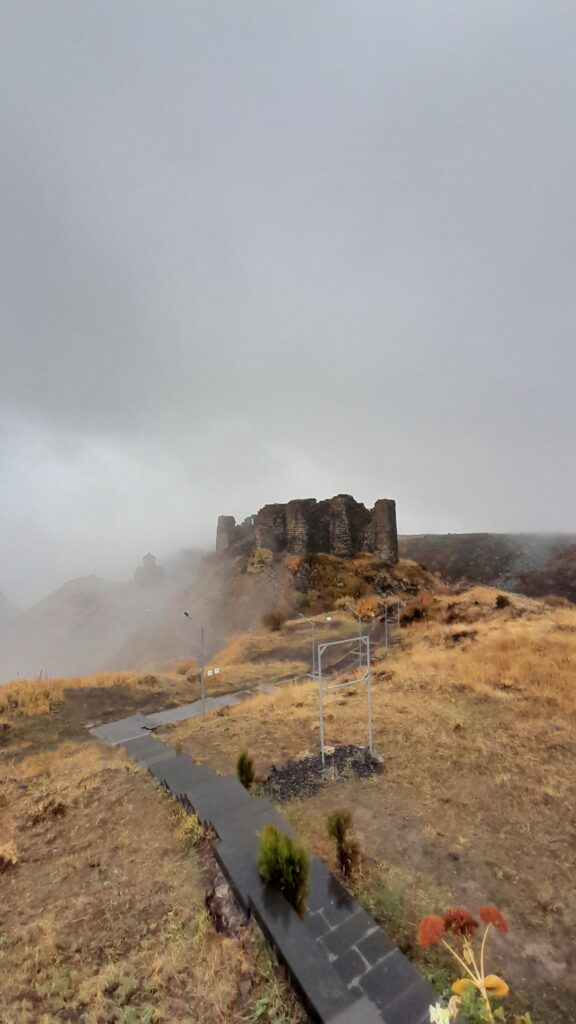
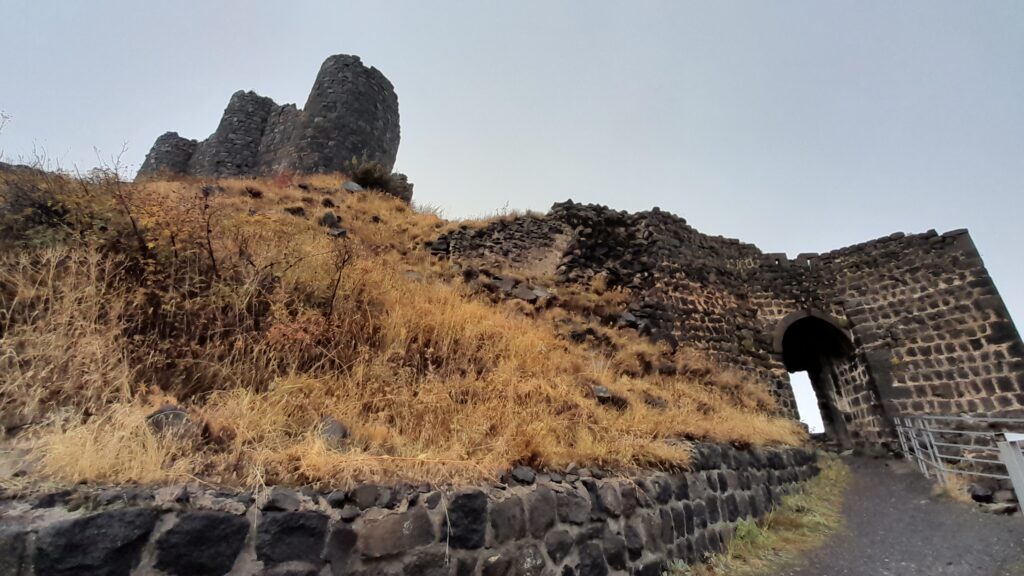



Seljuq Turk Invasion
The 1070s marked a challenging period for Amberd as it fell prey to the Seljuq Turks. However, the fortress saw a triumphant moment in 1197 when Armenians and Georgians, led by General Zakare Zakarian, liberated it from the invaders. Subsequent centuries witnessed further fortification during the Zakarian control.
Vachutian Family and Mongol Invasion
In 1215, the Vachutian family took ownership, but their reign was short-lived as the Mongols, in 1236, captured and ruthlessly destroyed the fortress. The remnants of Amberd stood as silent witnesses to a bygone era.
Reconstruction and Excavations
The 20th century brought a renewed interest in Amberd’s history. Reconstruction efforts and archaeological excavations unveiled the castle ruins covering an expansive 1,500 square meters, featuring inclined walls and a three-story interior adorned with lavishly decorated rooms.
The architectural marvel of Amberd lies not only in its size but in the meticulous design of inclined walls and the unique water supply system. A terra cotta pipeline ensured a constant water supply, with a concealed water source offering a survival lifeline during attacks.
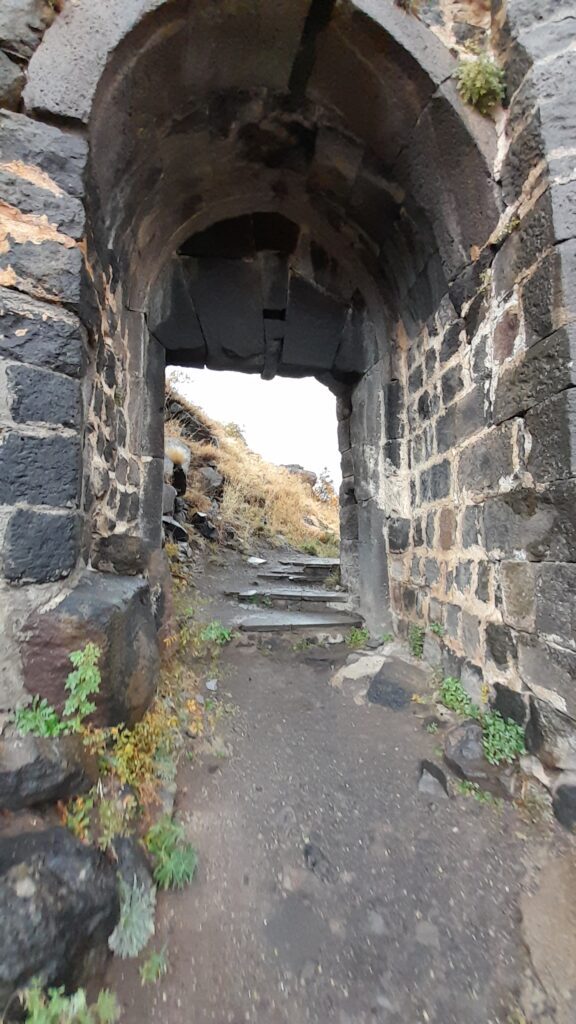

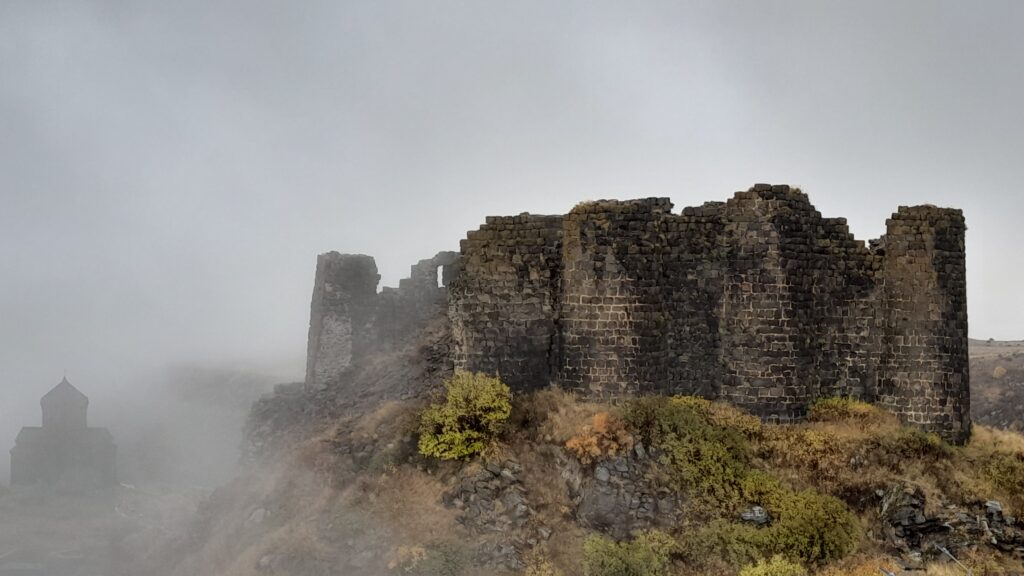

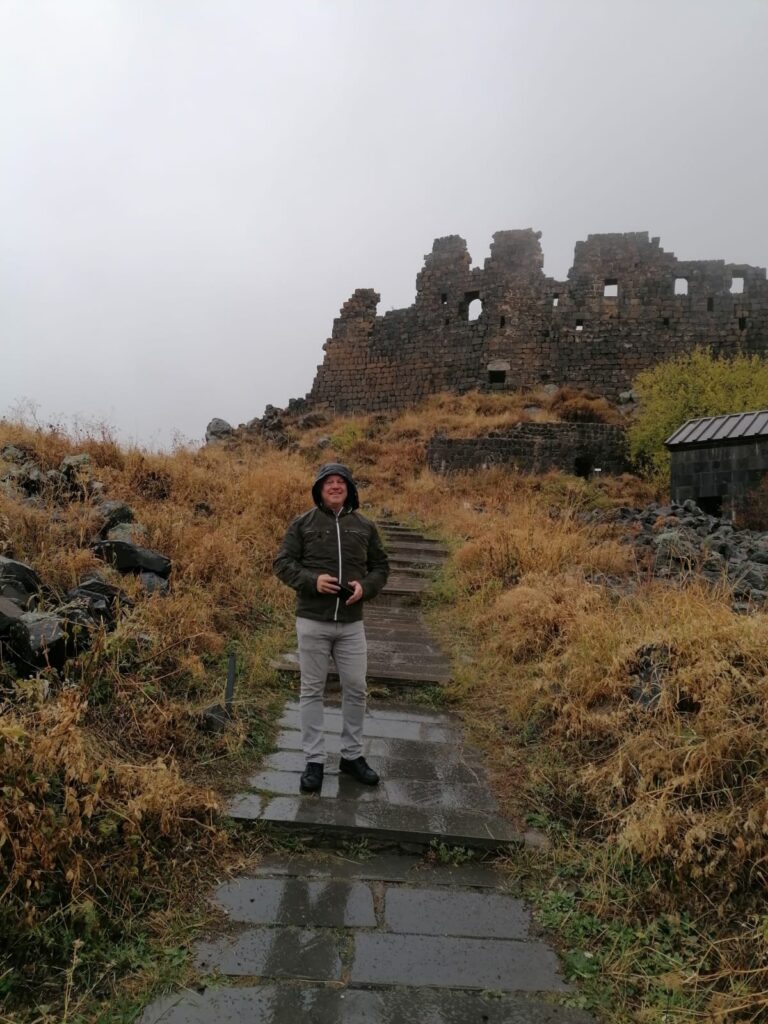

Bath House
The bath house, a testament to medieval engineering, was constructed between the 10th and 11th centuries. It employed a hypocaust heating system, reminiscent of ancient Rome, and boasted twin bathing rooms, providing a glimpse into daily life within the fortress.
A chronological history section within Amberd’s history recounts its various phases, from invasions and liberations to a gradual state of abandonment. Each stone of Amberd holds tales of triumphs and tribulations.
Current State
Amberd, once a thriving fortress, now stands in a ruined state, a poignant reminder of its past glory. Nevertheless, its significance as a primary military-defensive point in the Armenian Kingdom echoes through the ages.
Situated in the Aragatsotn province, Amberd is a mere 52 km from Yerevan. Its strategic location at the confluence of the Arkashen and Amberd rivers adds to its historical importance.
Location: Amberd Road, Armenië
The Church of Surb Astvatsatsin
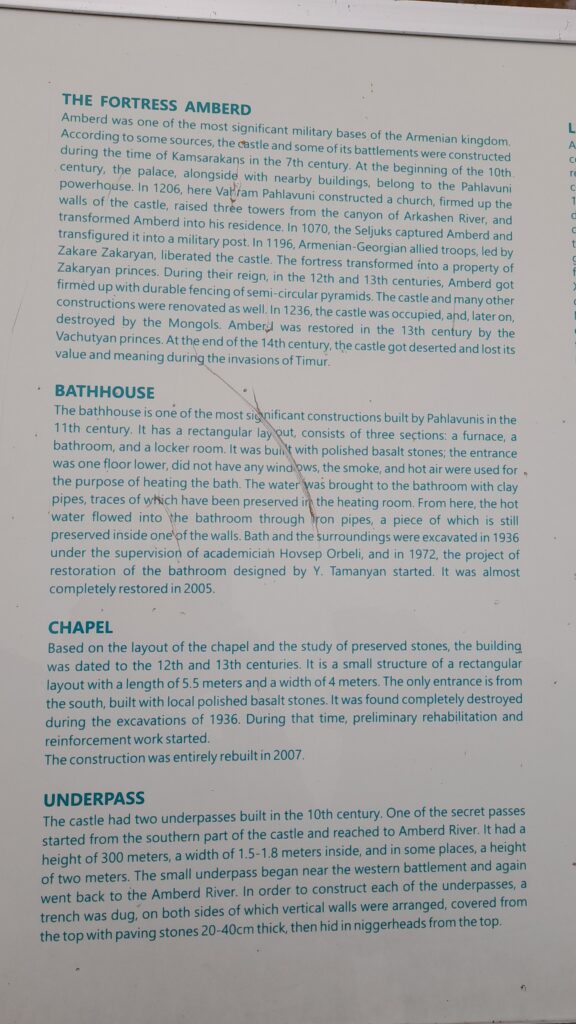

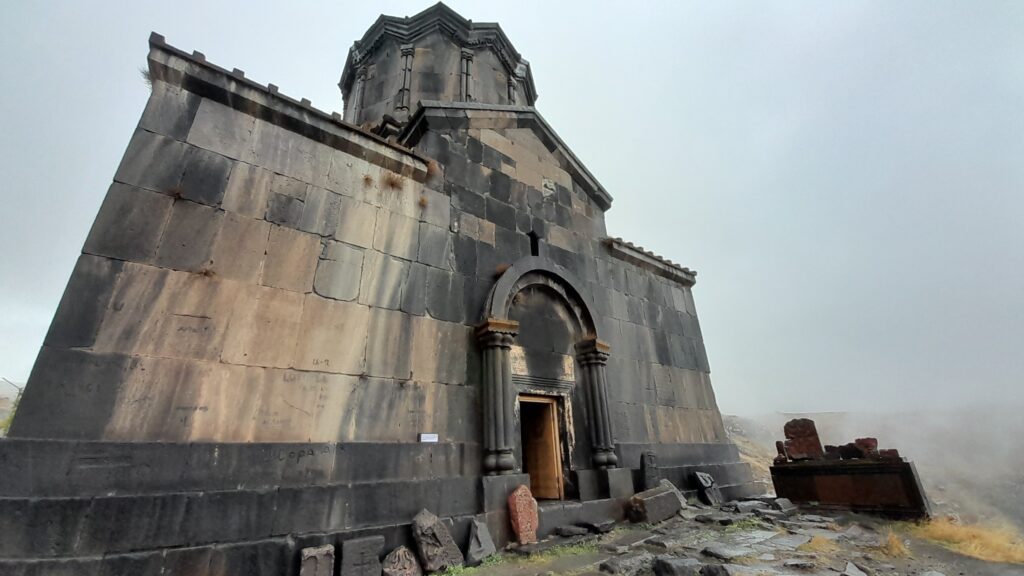

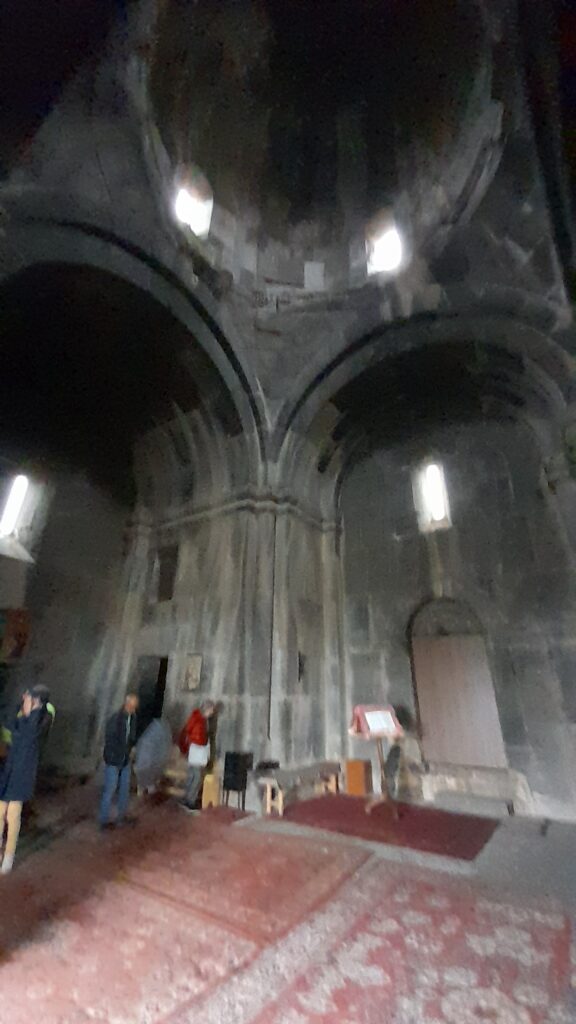

The Church of Surb Astvatsatsin, nestled within the walls of Amberd Fortress, represents a blend of medieval Armenian ecclesiastical architecture and cultural heritage. Erected in 1026 under the patronage of Prince Vahram Pahlavouni, this church, dedicated to the Holy Mother of God, reveals a modest exterior concealing a sanctuary of spiritual serenity. Following the traditional cross-in-square plan, its unassuming appearance belies the intricate detailing and religious artwork within. As a witness to the historical ebb and flow of Amberd, the church stands as a testament to the interconnectedness of the spiritual and secular realms during medieval times. Its endurance through invasions, liberations, and ongoing preservation efforts underscores its cultural importance.
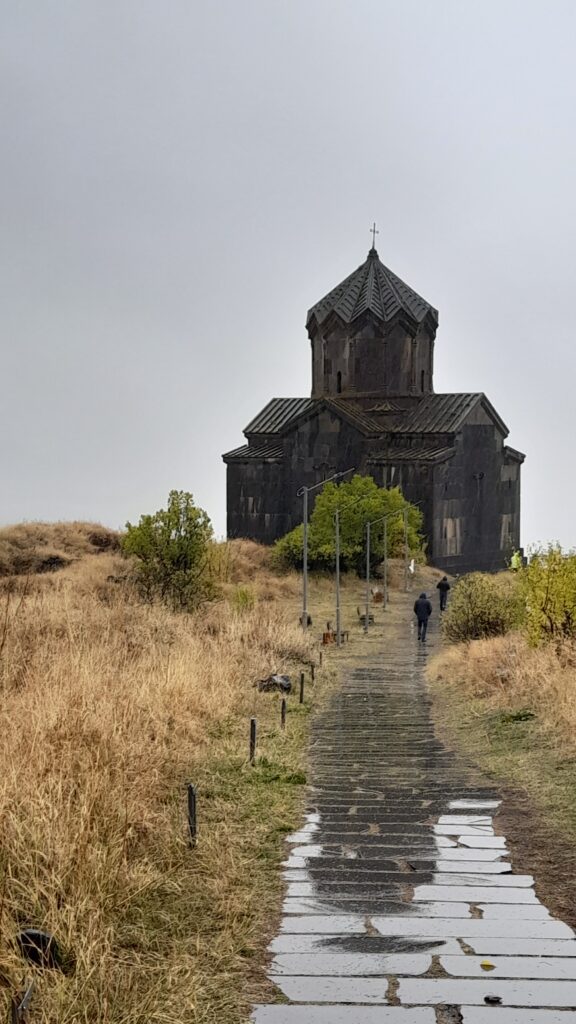

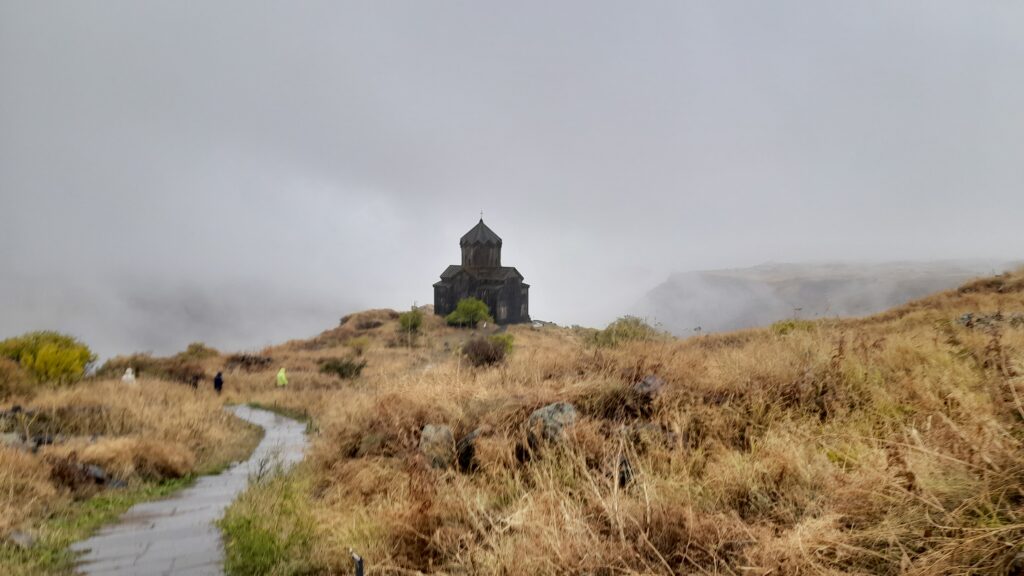

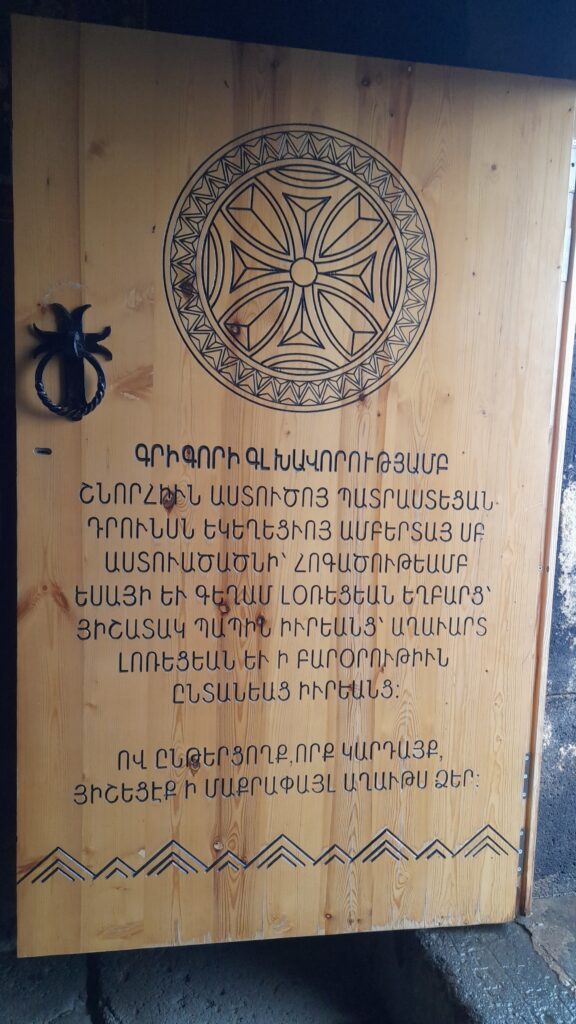

Use by Armenian Royalty
Beyond its military role, Amberd served as a summer residence for Armenian Kings and Princes. Its walls bore witness to the strategic planning and decision-making of Armenian rulers during critical periods.
The fortress faced challenges during the Seljuk invasion but emerged victorious under Armenian-Georgian forces. The Mongol invasion, however, left scars that were later healed through reconstruction in the 13th century.
Ongoing renovations and archaeological endeavors aim to preserve the essence of Amberd. Despite its ruined state, the fortress welcomes visitors throughout the year, with the period from March to July recommended for the vibrant flowers that surround the castle.
Conclusion
In the heart of the Aragatsotn province, Amberd Fortress stands as a testament to Armenia’s rich history. Its ruins, though weathered by time, echo with the footsteps of ancient civilizations, from Stone Age settlers to the strategic minds of Armenian royalty. Amberd invites us to delve into the mysteries of its past, sparking a connection between the contemporary world and the resilience of the fortress “in the clouds.”
People also read:
- 45 Things to See and Do in Armenia
- Unveiling the Mysteries of Garni Temple in Armenia
- 25 Things to See and Do in Yerevan
- Exploring the Beauty of Geghard Monastery in Armenia
- Khor Virap Monastery: Unveiling Armenia’s Historical Gem
- Areni Cave: Unearthing Millennia of History and Discoveries
- Yerevan in 25 Photos
- Saghmosavank Monastery: A Timeless Marvel in Armenian History
- Noravank Monastery: A Journey Through Time
- Etchmiadzin Cathedral: A Beacon of Armenian Christianity
- Haghartsin Monastery: A Time-Tested Beauty in Armenia
- Zvartnots Cathedral
- Exploring Odzun Church: A Hidden Gem in Armenia
- Akhtala Monastery Complex in Armenia
- Haghpat Monastery: A Timeless Beauty in Armenia
- Armenia in 50 Photos
- Sevanavank: A Pearl on Lake Sevan’s Shoreline
Book a tour
FAQ’s
Read more articles on my Armenia page
This article may contain affiliate links. This means that we receive a small commission when you book something via these links. Of course, this does not cost you anything extra. Did our tips help you? We would love it if you book your trip via the links in the article above. Thank you so much.